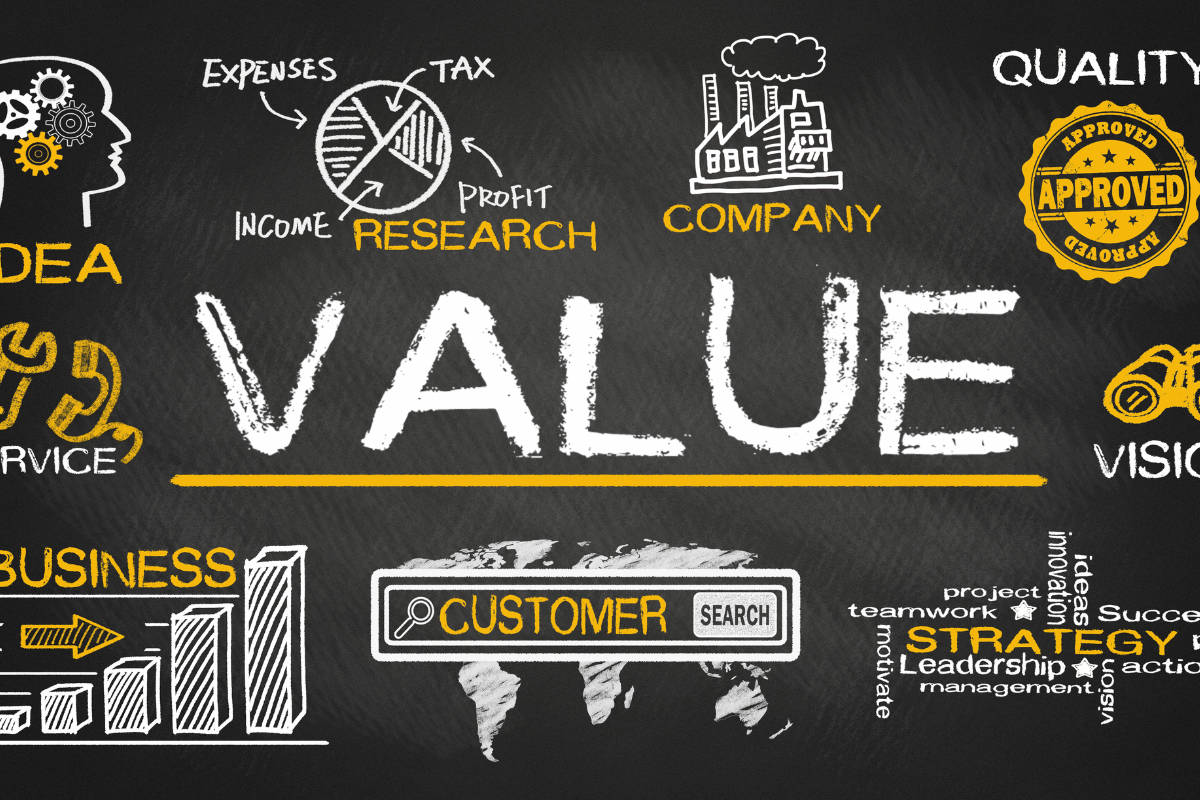Unpacking the Value Chain: A Practical Guide
Do you really get how a company’s value chain affects its edge in the market? Looking into the value chain helps you see how a business works, its costs, and where it can innovate. This approach helps you make smarter, more detailed investment choices for long-term wins.
This guide will dive into the value chain, its main parts, and how to use it to find new chances and boost your company’s competitiveness. Get ready to explore the value chain’s full potential and improve your investment decisions.
Understanding the Value Chain Concept
The value chain concept helps us see how businesses add value for their customers. Michael Porter created the Porter’s value chain model. It shows the main and secondary activities that give a company its edge in the market.
What is a Value Chain?
A value chain is all the steps a company takes to make a product valuable. It includes designing, making, selling, and even after-sales service. This idea shows how all these steps work together to make a product worth more.
Primary and Secondary Value Chain Activities
Porter’s model says the primary activities are key:
- Inbound logistics
- Operations
- Outbound logistics
- Marketing and sales
- After-sales servicing
The secondary activities help support these main ones. They include:
- Infrastructure
- Human resources management
- Technology development
- Procurement
By looking at these activities, companies can find ways to stand out and offer more value to customers.
“The value chain is a powerful tool for systematically examining all the activities a firm performs and how they interact to analyze the sources of competitive advantage.”
– Michael Porter
Analyzing a Company’s Value Chain
Looking into a company’s value chain means checking how well it does in inbound and outbound logistics, and its operations. These key areas help us see what makes a company stand out and where it can get better.
Inbound Logistics: Supply Chain Efficiency
Looking at inbound logistics means checking how the company gets its raw materials. This includes how it buys, transports, and stores these materials, and its relationships with suppliers. Having a well-managed supply chain is key to keeping resources flowing and cutting costs.
Operations: Product Production and Innovation
Checking the operations means seeing how the company turns raw materials into products. It looks at product design, quality control, innovation, and how it uses technology. Being efficient in making products and innovating can really help a company stay ahead.
Outbound Logistics: Distribution and Inventory Management
Outbound logistics looks at how the company stores and delivers products, manages inventory, and keeps costs down. Doing these well can make a company more customer-friendly and profitable.
By looking at these main parts of the value chain, investors and businesses can learn a lot. They can see how well a company works, its potential for new ideas, and its place in the market.
“Efficient value chains result from the synchronized refinement of activities, leading to optimized output through ongoing analysis.”
Marketing, Sales, and After-Sales Service
The stages of marketing, sales, and after-sales service are key to getting customers and keeping them happy. Good marketing and sales, along with top-notch after-sales support, help a company stand out and succeed over time.
Today, making things personal is crucial. A recent survey showed that 60% of people won’t even look at outreach that doesn’t match their needs and likes. To stay ahead, companies need to focus on marketing that really speaks to customers.
When it comes to sales, being ahead with new products is a big reason why customers switch brands, says an IDC B2B Technology Buyer Survey. Sales teams need the right tools and knowledge. A good sales playbook helps them find out what customers need, show how their products stand out, and prove the value of their products.
After-sales service is key to keeping customers coming back. By offering great support and solving customer problems, companies can build strong relationships and get repeat business. Technology is key in making after-sales service work well, making sure customers get what they need quickly and efficiently.
Linking marketing, sales, and after-sales service together is vital for growth and making customers happy. By focusing on making things personal, bringing new products to the market, and putting customers first, companies can beat the competition and keep customers loyal.
“Incorporating detailed information about value selling and proven ROI metrics into the sales playbook equips teams with the tools and knowledge they need for successful sales cycles.”
Unpacking the Value Chain: A Practical Guide
Identifying Value Creation Opportunities
Looking closely at a company’s value chain shows many chances to add more value. This could mean making things work better, cutting costs, or coming up with new products and services. Using these chances can really help a company stand out in the market.
A logistics company might find ways to make its supply chain better. This could mean finding the best routes for transport or making inventory management smoother. This could save a lot of money and make delivery times faster, making the company stronger against its competitors. A manufacturing firm might put money into automation and robotics to work better, or create new product features that meet what customers want.
Enhancing Competitive Advantage
After spotting value creation opportunities, the next step is to put them into action to boost competitive advantage. This could mean changing the business model, finding new ways to make money, or using new tech to beat competitors.
- Making operations smoother and cutting costs can let a company charge less, drawing in more customers.
- Coming up with new products and better customer service can make a company stand out, letting it charge more.
- Using data analytics and digital tech can make operational efficiency better and help with making big decisions.
By always working on its value chain and keeping up with market changes, a company can get stronger and succeed for a long time.
“The key to winning in today’s competitive landscape is to continuously innovate and find new ways to create value for customers. By optimizing your value chain, you can unlock hidden opportunities and gain a decisive edge over your rivals.”
Environmental Regulations and Value Chain Impact
The environmental scene is changing fast, and companies must keep up with new rules to stay sustainable. A big challenge is dealing with PFAS (per- and polyfluoroalkyl substances) in landfills.
Landfill Management and PFAS Regulations
The EPA has made PFOA and PFOS hazardous under the CERCLA law. This means landfills, a big source of PFAS pollution, will have to follow stricter rules. These “forever chemicals” can get into groundwater and harm the environment.
To lessen the harm, landfills will need better leachate containment and cleanup tech. This will change how landfills work, possibly making them more expensive and affecting the whole supply chain.
“Nearly one-third of PFAS in the environment can be found in landfills, and landfills accepting PFOA and PFOS waste will face stricter regulations, including more rigorous monitoring and reporting.”
As rules on the environment keep changing, companies must update their plans to handle environmental regulations, PFAS contamination, landfill management, and value chain sustainability. Not keeping up could hurt their finances and reputation, making the business less viable in the long run.
Collaborative Business Relationships and Value Creation
In today’s fast-paced business world, building strong partnerships is key. By working together through value chain partnerships and vested outsourcing, companies can find new ways to create value. This helps them stand out in the market.
Professor Elinor Ostrom won a Nobel Prize for her work on collaboration. She showed how groups can manage shared resources well for a long time. They did this through democratic rules, regular meetings, and enforcing the rules with penalties.
Businesses are taking cues from Ostrom and other experts. They see the value in strategic alliances and co-creation. These partnerships let companies use each other’s strengths. They make operations smoother and encourage innovation along the value chain.
“The book offers an in-depth and systematic account of how value is created in business-NGO partnerships, supported by case examples that ground the analysis in practical experiences.”
Companies do better when they focus on what benefits everyone. This mindset helps them work together better. They can improve how they operate, make better products, and strengthen their market position. This way, they gain a lasting edge in the market.
The business world is getting more complex. So, thinking deeply about how to work together is more important than ever. Experts and scholars share insights that can help leaders turn ideas into action. This leads to growth and value creation that lasts.
Conclusion
Effective value chain management is key to a business’s success. By looking closely at a company’s value chain, investors can see its strengths, weaknesses, and growth potential. This helps them make better investment choices and spot chances to add value.
The value chain shows a company’s whole operation, from getting materials to selling and supporting customers after the sale. Improving these steps helps businesses stand out and give more value to customers. Working with partners and keeping up with new rules can also boost a company’s market position.
The global market for returnable packaging is growing fast, thanks to more people wanting sustainable options and wanting to save money. Value chain insights are more important than ever for businesses and investors. By using value chain management, companies can handle today’s complex business world and aim for lasting success in a changing market.
Source Links
- Unpacking Supply Chain Traceability: A Comprehensive Guide
- Unpacking the Digital Transformation of Trade – Trade Ready
- Global value chain governance: Intersections with international business
- Mtm11 white paper value chain analysis
- Guides for Value-Chain development: A comparative review
- Britannica Money
- Exploring the Value Chain Concept: A Comprehensive Guide
- Build the Perfect Sales Playbook
- What is Content Operations and How Does it Work? Unpacking the Model – Kapost
- Recap: Samir Bhavnani and Gopal Shah on “Unpacking the Digital Shelf”
- UNPACKING THE SUPPLY CHAIN: LABOR UNCERTAINTY
- Unpacking Innovation
- The PFAS Value Chain – WhitePaper
- Sustainable Supply Chain Financing: A 2023 Guide
- Creating Value in Nonprofit-Business Collaborations: New Thinking & Practice
- Warehouse or store? Picking the wrong place to unpack can cost you
- Unpacking the Potential: Returnable Packaging Industry Insights






